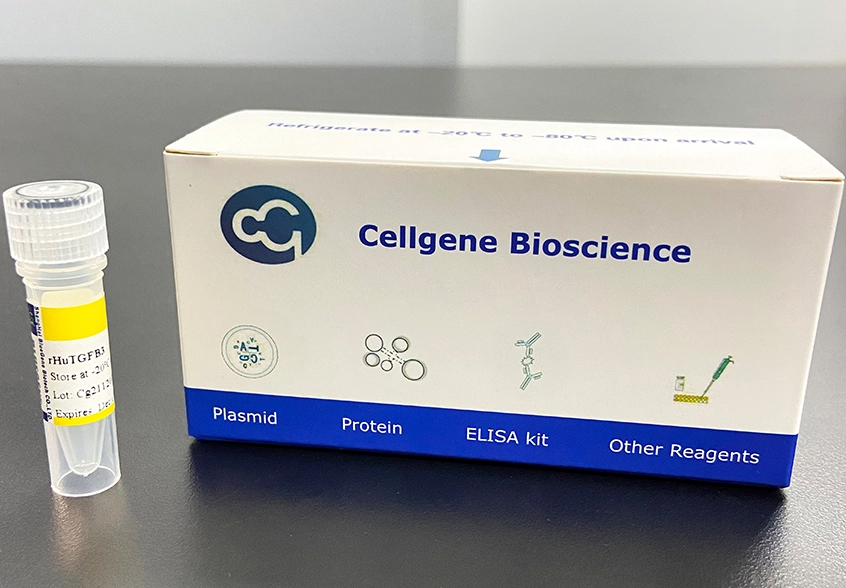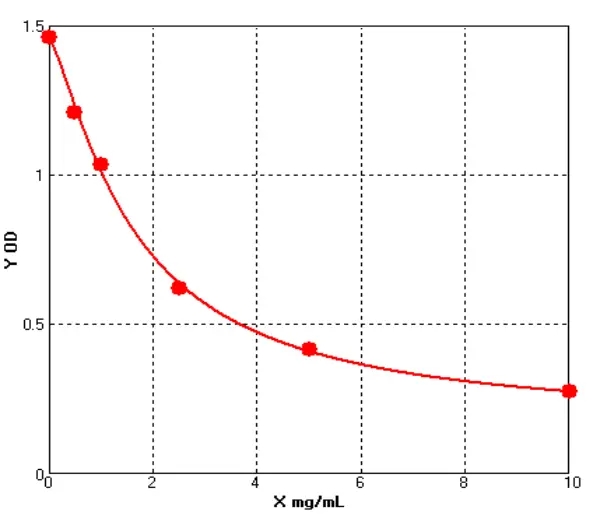Signal Transduction, Cancer, Stem Cells
Transforming Growth Factor β3 (TGFB3) can also be called as ARVD, LDS5, RNHF, ARVD1, TGF-beta3.


Signal Transduction, Cancer, Stem Cells
Transforming Growth Factor β3 (TGFB3) can also be called as ARVD, LDS5, RNHF, ARVD1, TGF-beta3.
Porduct's Information | |
Other Names | ARVD; LDS5; RNHF; ARVD1; TGF-beta3 |
Protein & NCBI Number | P10600, NM_001329939.2 |
Host | E.coli |
Express Region | 1-412aa |
Protein Length | Total length of the protein(including Tag) |
Protein Sequence | MKMHLQRALVVLALLNFATVSLSLSTCTTLDFGHIKKKRVEAIR GQILSKLRLTSPPEPTVMTHVPYQVLALYNSTRELLEEMHGEREEGCTQENTESEYYA KEIHKFDMIQGLAEHNELAVCPKGITSKVFRFNVSSVEKNRTNLFRAEFRVLRVPNPS SKRNEQRIELFQILRPDEHIAKQRYIGGKNLPTRGTAEWLSFDVTDTVREWLLRRESN LGLEISIHCPCHTFQPNGDILENIHEVMEIKFKGVDNEDDHGRGDLGRLKKQKDHHNP HLILMMIPPHRLDNPGQGGQRKKRALDTNYCFRNLEENCCVRPLYIDFRQDLGWKWVH EPKGYYANFCSGPCPYLRSADTTHSTVLGLYNTLNPEASASPCCVPQDLEPLTILYYV GRTPKVEQLSNMVVKSCKCS |
Molecular Weight | about 47.3kDa |
Fusion Tag | 6×His-SUMO (N-terminus) |
Purity | ≥95% SDS-PAGE |
Physical Property | liquid or lyophilized powder |
Reconstitution | Storage solution: We recommend using PBS or a suitable solvent according to the experimental requirements to prepare 1mg/mL storage solution, aliquot and store at -20 °C. Working solution: According to the experimental requirement, dilute Storage solution. The working solution can be stored at 4°C for 2-3 weeks after dilution. |
Storage & Stability | The shelf life of liquid form is 6 months stored at -20 °C /-80 °C. The shelf life of lyophilized form is 12 months stored at -20 °C /-80 °C. |
Applications | Antibody preparation, immunoassay (ELISA, WB), subcellular localization and interaction protein identification, etc. |
Lead Time | 5 to 10 business days; 2 to 3 days for stock products |
Other Names | ARVD; LDS5; RNHF; ARVD1; TGF-beta3 |
Protein & NCBI Number | P10600, NM_001329939.2 |
Background |
The mature monomer of TGF-β3 is composed of 112 amino acids, and the monomer part is at the carboxyl terminal of the precursor protein of TGF-β3.The structure of TGF-β3 in human body is a 25ku dimer, which is crosslinked by disulfide bonds between two monomers with the same structure and molecular weight of 12.5ku.TGF-β3 signaling is mediated by membrane-bound serine/threonine kinase receptors that regulate the transcription of target genes through theSmads protein pathway, thereby mediating a series of TGF-β3 biological responses. The protein is involved in embryogenesis and cell differentiation, and may play a role in wound healing. Studies have shown that the TGF-β family is the most closely known cytokine associated with scar formation. The TGF-β family is a feedback inhibition system. Although the amino acid homology of TGF-β1, TGF-β2 and TGF-β3 among each other is up to 70% , they play different roles in different cell types. TGF-β1 and TGF-β2 can promote collagen formation. while TGF-β3 can antagonize TGF-β1 and TGF-β2, suggesting that TGF-β1 and TGF-β2 are related to scar hyperplasia and TGF-β3 plays a role in scar regression. Recent studies have shown that TGF-β 3, a member of the transforming growth factor family, can effectively promote the transformation process of adipose stem cells into chondrocytes, thereby promoting chondrogenesis. |
Related Bluegene Biotech Products


